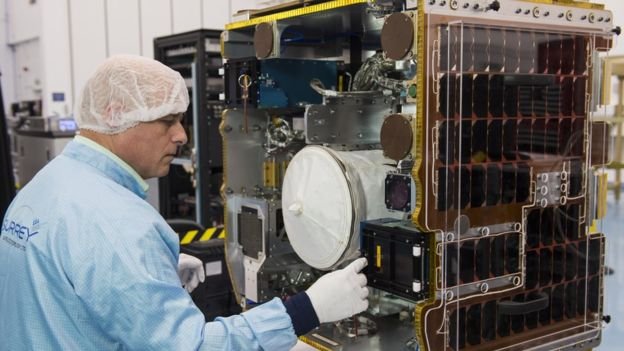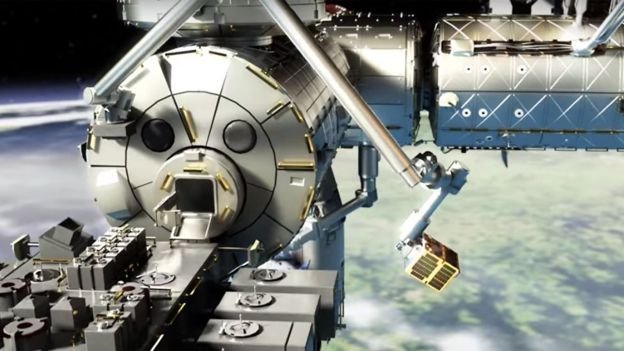
A UK-led experiment to tackle space junk has been sent into orbit.
takes the form of a small satellite that will practise techniques for tracking debris and capturing it.The RemoveDebris system is heading to the International Space Station where astronauts are expected to set the experiment running in late May.Space junk is an ever-growing problem with more than 7,500 tonnes of redundant hardware now thought to be circling the Earth.Ranging from old rocket bodies and defunct spacecraft through to screws and even flecks of paint - this material poses a collision hazard to operational missions.
RemoveDebris will showcase technologies that could be used to clean up some of this techno-garbage.The 100kg demonstrator left Earth on Monday onboard a SpaceX Falcon 9 rocket. It should arrive at the ISS on Wednesday.
- China space lab comes down over South Pacific
- Big harpoon is 'solution to space junk'
- Old satellites will need 'rapid disposal'

- The satellite will be stored at the station for a number of weeks, before being released by the orbiting platform's robotic arm to begin a series of manoeuvres.RemoveDebris carries its own "junk" - two small cubesats that it will eject and then track.For one of these, the "mother" satellite will demonstrate the laser ranging (Lidar) and camera technology needed to monitor and characterise debris in orbit; for the the other cubesat, it will actually try to snare the object with a net.There will also be a demonstration of a small harpoon.The RemoveDebris satellite will extend a boom with a target on the end.The sharp projectile will be fired at this to learn more about how such devices move and impact a surface in micro-gravity.At the end of its mission, RemoveDebris will deploy a large membrane.This "sail" will increase the drag from air molecules high in the atmosphere and act to pull the satellite down to Earth much faster than would otherwise be the case.

- The project, which draws on expertise from across Europe, is led from the University of Surrey's Space Centre.Its principal investigator is Prof Guglielmo Aglietti. He said the jury was still out on the best way to capture and remove space junk."As you know, there are other people who are going with the idea of a robotic arm. All these different technologies have their advantages and disadvantages," he told BBC News."For example, the ones we are testing - the net and the harpoon - are simple and low cost, but could be considered more risky in certain circumstances than a robotic arm."On the other hand, if your piece of debris is spinning very fast, it becomes very difficult to capture it with a robotic arm and an approach with a net could work better."He added: "The reason we are doing this mission this way is because it is low cost. In my opinion, whether or not there are going to be real missions to remove debris will depend on cost. And I worry that if they are extremely expensive, people will think about other
- priorities."

- The entire RemoveDebris project is costing €15m (£13m). Half of this is coming from the European Commission; the other half is coming from the 10 partners involved.These include Airbus, which supplied the harpoon technology, and Surrey Satellite Technology Limited, which assembled the spacecraft.The mission has been organised through NanoRacks, a Houston, US, company that specialises in deploying small satellites from the space station.
Hi! I am a robot. I just upvoted you! I found similar content that readers might be interested in:
http://www.bbc.co.uk/news/science-environment-43584070